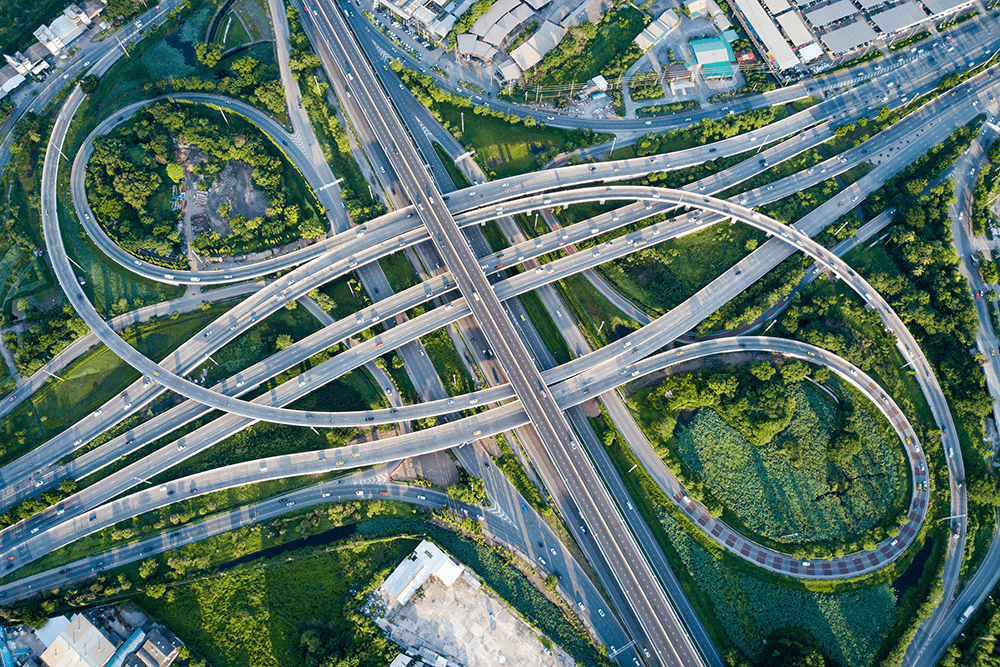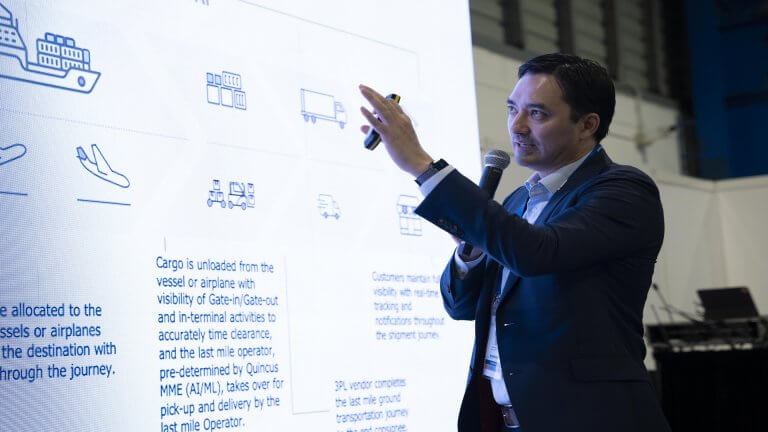
The AI-driven path toward sustainable logistics: The impact of optimization
“Perhaps one day we will have machines that can cope with approximate task descriptions, but in the meantime, we have to be very prissy about how we tell computers to do things.”
― Richard P. Feynman
The role of optimization in sustainable logistics
In part one of this sustainability series, we discussed the challenges and environmental weight of fast and cheap delivery. Here, we’ll explore a way to balance demands and obstacles with eco-conscious logistics. At Quincus, we don’t develop new engines and green transportation modes per se—we’ll explore how we can help design such technologies in a later post. However, we tackle an essential part of the transition to sustainable logistics: optimization.
New and disruptive technologies aren’t developed overnight. The time it takes to reach mass adoption can be measured in years, even decades. That said, the logistics world can’t simply replace its current energy sources cold turkey, even if they are highly pollutive. What supply chain leaders can (and must) do is ensure each plane, ship, and truck limits unnecessary distances.
The same motivations exist in logistics as with any regular outing. Without an accurate address, you’ll drive around aimlessly in search of your destination. If you fail to plan your activities before and after your visit, your entire day will be disrupted: you’ll miss your doctor’s appointment or your kid’s little league. This means more stress on the road, missed opportunities, and more time driving and polluting—all of which is entirely preventable.
Quincus’ mission to provide AI-driven optimization to supply chains is pivotal to reducing these inefficiencies and protecting the future of our planet.
The environmental impacts of AI-driven sustainable logistics
If Quincus—through its AI-driven optimization platform—reduces air and sea cargo emissions by just 1%, we immediately save the equivalent of:
- The carbon sequestered by 24.5 million acres of US forests
- The greenhouse gas emissions saved by 4200 wind turbines over an entire year
- 851 million bags of trash
- The carbon emissions from consuming 2.25 billion gallons of gasoline
Here’s how Quincus’ technology works toward our mission.
Inside sustainable route optimization technology
1. Geocoding: machine learning address verification
Technically, optimizing schedules and routes requires the combined actions of geolocation and sequencing. However, pinpointing accurate coordinates from a string of 15 words or less is highly complex. These words can help or hinder the process, can be in different languages, and are often riddled with misspellings and errors. In addition, map APIs may not accurately display locations. Quincus’ GeoEngine© uses machine learning and stochastic Bayesian approaches to identify and locate the exact coordinates of all shipment addresses. This geolocation phase is the first step of sustainable routing. In short, we minimize carbon emissions by helping fleets avoid useless trips.
2. Movement sequencing
The second logistics factor with a significant sustainable impact is the direct consequence of digitization: optimized movement sequencing. Our LogisticEngine© determines the best sequence of hubs between depots while identifying vehicle routing problems (VRPs) that could affect activities like pick-up or delivery in the first and last mile of the chain.
This is the fundamental traveling salesperson problem (TSP). Delivery drivers need to minimize distance and any costs between delivery addresses. This combinatorial optimization is NP-hard, one of the most challenging and complex computer science problems. The VRP is the mix of multiple TSPs—one per driver—and package allocation between drivers. By avoiding unnecessary kilometers and carbon emissions with such methodologies, we have a direct, positive environmental impact. We do even more indirectly by balancing traffic and reducing blockages, congestion, and emissions from vehicle idling, which leads to other environmental, social, and economic benefits.
This way, our work at Quincus AI goes beyond the supply chain. Our logistics research and technology have the potential to improve the day-to-day processes that negatively impact the world.
The chain reaction of green efforts
Is hardcore optimization the only solution to build more sustainable logistics? Unfortunately, even the best computation is not enough. The logistical chain will become significantly “greener” when actors across the value chain leverage digital platforms to improve visibility, streamline processes, and, ideally, collaborate to boost efficiency. For this reason, Quincus offers an OS for logistics and optimization. Simplifying the setup of a delivery network or following each package through its path is crucial. The former can reduce redundancies and leverage “smart” infrastructure capabilities, data analytics, and connectivity across the value chain. The latter will enable users or optimizers to react in real-time to any change in their network.
Driving optimization with Quincus AI
A dynamic view of the supply chain is essential to gaining the flexibility end-customers expect. But to bring flexibility to the next level, we need more than robust and quick optimization engines. We need to bring simulation to the table. Join us for part three of our sustainable logistics series.
Find out what optimization can do for your operations.
Generate your solution
Written by Christophe Pennetier
Continue reading:
Part 1: The AI-driven path to sustainable logistics
Part 2: The AI-driven path toward sustainable logistics: The impact of optimization
Part 3: The AI-driven path to sustainable logistics: The promises of simulation
Part 4: The AI-driven path to sustainable logistics: A new paradigm in logistics
Subscribe to keep up with our latest news









